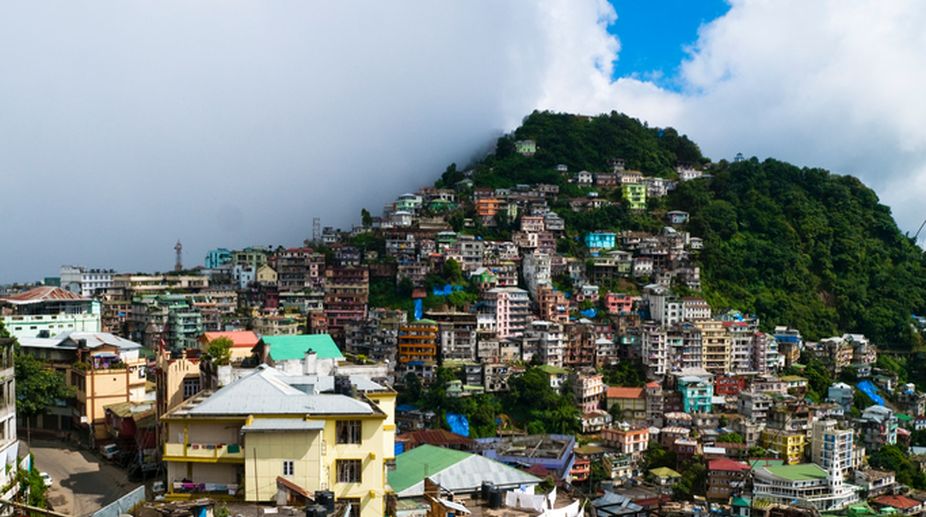There is something about India’s Northeast that makes it markedly different from the rest of India, and it’s not just the Mongoloid features of its people. At the risk of offence to “mainstream” Indians, it’s a much more civilised and cultured segment than the rest of the country.
In Gangtok, capital of Sikkim, that borders China, the streets are clean, the traffic is extremely orderly and the city centre is a pedestrian-only zone that makes it an easy city to walk, something that cannot be said for many cities in the country.
Advertisement
When in Aizawl, Mizoram
Visiting Aizawl, the capital of Mizoram, for the first time was another revelation. It’s again a honk-free and litter-free city where motorists wait patiently for traffic to move through narrow, serpentine hill roads. No one shows any impatience by honking or trying to overtake through aggression.
“We respect each other and we find no reason to honk as everyone has to reach his or her destination,” reasons John, a cab driver. John, who has never travelled outside the northeast, leave alone to Delhi or Kolkata, finds it strange to hear that people in Delhi or other big Indian cities are constantly honking at each other and road rage is a common occurrence.
Even the vegetable markets, mainly run by women vendors, are free of the plastic litter common to markets elsewhere and lines of women sitting in neat and organised formation are a pleasing sight. No one has to clean up the roads once the women finish with their business for they themselves clean up when they leave.
The Mizo fetish for cleanliness can make them worthy brand ambassadors of Prime Minister Narendra Modi’s Swachch Bharat Mission which he is struggling to implement in mainline India. Last year, after their champion side Aizawl FC travelled to neighbouring Shillong for a football match, thousands of their fans cleaned up the Jawaharlal Nehru Stadium, collecting and disposing of the trash left behind by some 23,000 spectators.
Is it safe to go to Mizoram
Mizoram, to most Indian minds conditioned by negative narratives from the Northeast in the media, is still a state in tribal turmoil and insurgent violence. Many asked me on return from Mizoram whether it was “safe” to go there. Mizoram did have a spell of insurgency for about 25 years till the mid-eighties, but that virtually ended in 1986 after the Mizo accord signed with then Prime Minister Rajiv Gandhi.
The seeds of that rebellion were sown after the great Mautam famine in 1959 with devastation of crops caused by a massive upsurge in rodent population. Laldenga, an ex-government official, was stung like many other Mizos by the utter neglect of the Mizo people of the Lushal Hills, which was then part of Assam, and formed a political organisation, the Mizo National Front (MNF), with the goal of achieving sovereign independence for Greater Mizoram.
Although that movement fizzled out for various geopolitical reasons, including cessation of support and sanctuary from across the borders, a man who is known to have played a significant role in bringing the MNF and Laldenga to the negotiating table was none other than Ajit Doval, the present National Security Adviser often described as the second-most powerful man in the Indian government.
Doval, who as a young officer in the Intelligence Bureau had his first posting in Aizawl, was by many accounts seen to have been instrumental in bringing the recalcitrant Mizos to the peace table that in course of time resulted in the Mizo accord. Since then Mizoram has kept the peace and has not had a return to the bloody insurgency that once saw the Indian Air Force jets strafe Aizawl — the only time the air force has been used to strike inside the country’s borders — to flush out armed Mizo insurgents who had taken up arms against the state.
Lush green slopes
Aizawl, with a population of about one million, is a cluttered hill town whose houses appear precariously wedged on lush green slopes. With absence of regulation regarding land use and building activities, not much thought appears to have been given to their structural safety and security by government or civic authorities. A study by the National Disaster Management Authority has assessed that if an earthquake of 8 on the Richter scale were to strike the mountain state, which is in a seismic zone V, a minimum of 17,000 lives would be lost and over 100,000 people could be injured or displaced.
Because of the Tropic of Cancer passing through Mizoram, the state gets abundant rainfall between April and October that accounts for its cratered roads, making one wonder if the state gets enough attention from New Delhi. There are frequent landslides that wreak plenty of damage and the state has been unsuccessfully seeking to convince the Centre that they should get landslide relief under the same provision that plains’ states get flood relief.
Mizo cuisine
A people and their culture are often known by their food and Mizo cuisine in many ways stands apart even from the rest of the Northeast. For one, it is virtually oil-free. Though, by virtue of being majority Christian, it’s a largely non-vegetarian society, people also eat a lot of fresh vegetables that is boiled, stewed and cooked with local spices. Cooking medium is often pork fat that is fermented in a special container.
Pork and beef are staple foods and are available in smoked form in meat shops which is then boiled. A favourite dish is smoked pork with mustard leaf, a common cooking ingredient. Another local delicacy is bamboo shoot, which is sold at every street corner, with pork. Bamboo shoot is even sold outside the airport by native women for air travellers to take back with them.









